Fistful of planets part II (2021)
Autoproduzione / Co-produzione con Mattias Olsson
A sei anni di distanza dalla prima “manciata di pianeti”, Elisa Montaldo è pronta a condurci nel suo nuovo viaggio immaginario attraverso una galassia sconosciuta… questa volta, però, non sarà una “semplice” esperienza sonora, ma totalmente “immersiva”.
Quasi una sorta di “reazione” al periodo di stop forzato dovuto alla pandemia, le canzoni di Fistful of planets part II sono uscite come un fiume, alcune nate tempo fa in luoghi diversi ma rimaste in stato di “embrione musicale”, altre scritte e registrate in un giorno (leggi l’intervista). Non solo, durante il suo viaggio, Elisa ha realizzato gradualmente quale fosse l’importanza di avere anche qualcos’altro di tangibile, oltre la musica (e il disco fisico), degli elementi che potessero far comprendere il senso profondo a chi lo ascolta. Ed ecco che, dalle immagini di Delfilm al profumo di Strega del Castello (le due artiste che hanno collaborato con lei), passando, ovviamente, dalla musica, quanto offerto da Elisa Montaldo nel box in edizione limitata, è una vera “esperienza polisensoriale”.
Soffermandoci ora solo sull’aspetto musicale dell’album, uno degli elementi più affascinanti e magici dell’opera è la storia dell’incontro con Monsieur Attala, distinto signore novantenne amante della musica e compositore amatoriale di poesie e di operette, cliente dell’hotel in cui lavora Elisa. Rimase colpito dal mio modo di suonare il piano, emozionale e puro a detta sua, e mi donò lo spartito del “Valse des Sirènes” con un libro a fumetti (bellissimo!) sulla leggenda della sirena Ikèa di Montluçon, dicendomi che lui aveva scritto questo adattamento della leggenda e che potevo usare questa musica e suonarla. Ho pensato subito che fosse una coincidenza quasi magica, perché proprio in quel periodo stavo sviluppando l’idea di iniziare “Fistful” (leggi l’intervista). Ed è proprio il “Valse des Sirènes” l’elemento (musicalmente vintage) che funge da “alfa e omega” dell’album. Nel mezzo, invece, tutto è magnetico, fatato, etereo, avvolgente, con dei testi davvero profondi che, oltre ad essere ascoltati, vanno assolutamente letti e compresi.
In Fistful of planets part II è più chiaro il messaggio di “spazio”: il mio obiettivo è quello di far aprire la mente dell’ascoltatore e di donare ad essa uno spazio nuovo, perché credo che tutti noi stiamo soffocando in questa realtà e siamo condizionati sempre di più a soffocare i nostri istinti e la nostra intelligenza. Voglio credere che questa musica possa in qualche modo donare una scintilla e far svegliare nelle persone la volontà di reagire al presente e migliorare il mondo intorno a noi.
E la schiera di collaboratori è davvero nutrita e di altissimo livello. Accanto ad Elisa (voce, piano, tastiere, effetti, autoharp, mix), infatti, troviamo Matteo Nahum (arrangiamento d’orchestra vintage), Paolo Tixi (batteria), Hampus Nordgren Hemlin (mellotron, basso, chitarra elettrica ed acustica, celesta, vibrafono, campane tubolari, Roland Vocoder plus VP-330, kantele), Mattias Olsson: percussioni, batteria, clap trap, drum machines, mellotron, Casio Sk-5, Ondes Magnetique, Gizmotron bass, random tone generator, Mother modular system, Hohner bass 2, Kaoss pad), Steve Unruh (flauto, violino elettrico), Rafael Pacha (chitarra classica), Nina Uzelac (violoncello), Jose Manuel Medina (arrangiamento sezione d’archi, arrangiamento orchestrale), Ignazio Serventi (chitarra classica, chitarre), David Keller (violoncello), Yuko Tomiyama (voce narrante), Maitè Castrillo (voce narrante), Stefano Guazzo (sax), Tiger Olsson (voce in Into the black hole) e Diego Banchero (basso).
Caos che si fa luce, questo l’avvio di Valse de Sirènes (chanson): voci distorte e “rumori” elettronici che trovano compimento dapprima in un vecchio carillon e poi in un canto francese d’altri tempi “ovattato”, proveniente da un vecchio grammofono, un po’ Edith Piaf, con l’arrangiamento d’orchestra vintage creato da Nahum che rende il tutto molto suggestivo.
Floating / Wasting Life. Suoni che fluttuano nell’aria, avviluppanti, ipnotici, stregati, uno stato “altro” che si raggiunge col trascorrere dei secondi prima che il piano di Elisa subentri portando con sé un nuovo umore, più cupo e malinconico. Poi la chitarra di Hemlin e i vocalizzi cambiano il quadro dando il La al canto ispirato della padrona di casa e anche il sostrato sonoro si fa più articolato, notevole, mutando ancora poco oltre, facendosi vellutato, nonostante la batteria in marcia. E i giochi vocali finali sono davvero affascinanti. […] Floating into the dark space / you find yourself alone / “when all of this began? Will I come back home?” / Maybe it’s all a joke / or maybe all of this is true? / don’t you see, all these questions lead to you! / So, try to find a meaning / listening to my voice / come on and wake up so that / you can make a choice / So let’s stop wasting life […].
Atmosfera sacra per Earth’s Call, con il lungo soliloquio di violoncello eseguito da Nina Uzelac, davvero solenne e toccante, avvolto da tappeti eterei e magnetici. E anche quando subentrano nuovi interpreti (tastiere e ritmiche), la sensazione di fondo non muta ma assume solo una nuova fisionomia. E il flauto incantato di Unruh, un po’ alla Jerry Cutillo, giunge, in seguito, ad aggiungere un tocco incantato e canterburyano al tutto, prima che il quadro si rifaccia emotivamente denso.
L’angelica voce di Elisa Montaldo ci dà il benvenuto in We are magic. Intorno a lei un clima eighties, spensierato, che si arricchisce cammin facendo con dettagli sognanti (e un particolare effetto vocale, il vocoder utilizzato da Hemlin). E così il brano scorre via piacevolmente. […] If you’re worried for your choices / if you don’t find peace in your mind / just relax and drink a glass of wine […].
Un piano sussurrato e piccoli dettagli mediterranei sono gli elementi che ci introducono in Haiku. Poi la natura dei versi giapponesi recitati da Yuko Tomiyama ci fanno intuire che tutto sta per cambiare. E così è, ma non completamente, con Maitè Castrillo che raccoglie il “testimone” da Yuko e ci indica la via (in francese), con un’atmosfera carezzevole e pluristratificata che avviluppa morbidamente l’ascoltatore. E non è tutto perché le corde di Serventi, sulla stessa falsariga emotiva, prendono poi la scena e avanzano indisturbate, mentre intorno tutto è evanescente.
Mood esoterico, un po’ OAK, per l’avvio di Feeling/nothing/into the black hole, con il suo superbo intreccio flauto/piano in primo piano. E i due protagonisti crescono d’intensità cedendo poi anche spazio ad altri interpreti quali percussioni e sax. E a seguire tutto si fa ambiguamente tenebroso: se i suoni danno questa sensazione, il canto fatato di Elisa tiene il tutto “a freno”. Ma il brano è lontano dalla sua conclusione, ed ecco che allora la Montaldo si lancia completamente in un mix decisamente sperimentale che fonde psichedelia, world music alla Aktuala, trovate battiatiane (vedi il finale di “Shakleton”), sax jacksoniano, ovviamente tanto piano camaleontico, e numerosi altri tasselli che ne fanno un momento straordinario. Solo sul finire torna, lontano, evanescente, il canto retrò di inizio album.
Wesak. Piccolo intermezzo al piano: minimalista, dolcissimo, intenso.
Washing The Clouds. Quasi proseguendo con lo stesso “flusso interiore” del brano precedente, ecco che Elisa ci accoglie nuovamente con il suo tocco delicato al piano. Quasi senza “voler disturbare” giunge anche il canto e tutto si fa sublime, sognante (a tratti ricorda le opere di Barbara Rubin). E anche quando il brano si apre verso la luce, la sensazione è quella di vivere ancora un sogno, con il binomio piano/voce che si completa a vicenda perfettamente. E quando Elisa mette da parte il suo canto, ecco che il solo distorto e intenso di Serventi calamita su di sé l’intera scena. Ma non è solo e l’abito creato dalle mani e dalla mente di Elisa Montaldo deflagra pacificamente negli ultimi minuti dell’episodio. Magnificamente. […] As every morning when the sun will rise / to warm your sleepy eyes, / I will be there to find the meaning of / the shadows, the rainbows, the ghosts / and put the clock in time.
Tutt’altra indole per l’avvio di Valse Des Sirènes (grand finale), un valzer, appunto, ma in chiave montaldiana, quindi intimo e senza fronzoli. Poi il tema si arricchisce di elementi cinematografici proiettandoci in una pellicola felliniana. E tutto è ben congegnato, grazie soprattutto agli interventi precisi e fantasiosi dell’orchestra. E gli ultimi minuti sono decisamente “fuori rotta”, con quello che sembra un synth alla Battiato unico elemento sonoro ed Elisa che ci indica il cammino interiore da seguire.
“Al servizio” de Il Tempio Delle Clessidre e di altri vari progetti, o in solitaria, Elisa Montaldo conferma ancora una volta, qualora ce ne fosse bisogno, il suo talento, la sua arte e la sua eleganza.
ENGLISH VERSION
Fistful of planets part II (2021)
Self-production / Co-production Mattias Olsson
Six years after the first ” fistful of planets “, Elisa Montaldo is ready to take us on her new imaginary journey through an unknown galaxy… this time, however, it will not be a “simple” sound experience, but a totally “immersive” one.
As a kind of “reaction” to the period of forced stop due to the pandemic, the songs of Fistful of planets part II came out like a river, some born long ago in different places but remained in a state of “musical embryo”, others written and recorded in one day (read the Italian interview). Not only that, during her journey, Elisa gradually realised how important it was to have something else tangible, besides the music (and the physical record), elements that could help the listener to understand the deep meaning. And so, from the images of Delfilm to the perfume of Strega del Castello (the two artists who collaborated with her), passing, of course, through the music, what Elisa Montaldo offers in the limited-edition box is a true “multi-sensory experience”.
One of the most fascinating and magical elements of the album is the story of the meeting with Monsieur Attala, a gentleman in his nineties, a music lover and amateur composer of poems and operettas, who was a guest at the hotel where Elisa works. He was struck by my way of playing the piano, emotional and pure in his opinion, and gave me the score of the “Valse des Sirènes” with a comic book ( wonderful!) on the legend of the siren Ikèa of Montluçon, telling me that he had written this adaptation of the legend and that I could use this music and play it. I immediately thought it was an almost magical coincidence, because at that time I was developing the idea of starting “Fistful” (read the Italian interview). And “Valse des Sirènes” is the (musically vintage) element that acts as the album’s “alpha and omega”. In the middle, everything is magnetic, enchanted, ethereal, fascinating, with really deep lyrics that, besides being listened to, have to be read and understood.
In Fistful of planets part II the message of “space” is clearer: my aim is to open the listener’s mind and give it a new space, because I believe that we are all suffocating in this reality and we are conditioned more and more to stifle our instincts and our intelligence. I want to believe that this music can somehow spark and awaken in people the will to react to the present and improve the world around us.
And the line-up of collaborators is really rich and top-notch. Alongside Elisa (piano, vocals, keyboards, effects, autoharp, mix), we find Matteo Nahum (vintage orchestra arrangement, Paolo Tixi (drums), Hampus Nordgren Hemlin (mellotron, bass, electric and acoustic guitars, celeste, vibraphone, tubular bells, Roland Vocoder plus VP-330, kantele), Mattias Olsson (percussion, drums, clap trap, drum machines, mellotron, Casio Sk-5, Ondes Magnetique, Gizmotron bass, random tone generator, Mother modular system, Hohner bass 2, Kaoss pad), Steve Unruh (flute), Rafael Pacha (classic guitars), Nina Uzelac (cello), Jose Manuel Medina (string section arrangement, orchestral arrangement), Ignazio Serventi (classical guitar, guitars), David Keller (cello), Yuko Tomiyama (reciting vocals), Maitè Castrillo (reciting vocals), Stefano Guazzo (saxophone), Tiger Olsson (vocals in Into the black hole) and Diego Banchero (bass).
The chaos that becomes light, this is the start of Valse de Sirènes (chanson): distorted voices and electronic “noises” that find their fulfilment initially in an old music box and then in a “muffled” French song of yesteryear, coming from an old gramophone, a bit Edith Piaf, with the vintage orchestra arrangement created by Nahum that makes it all very evocative.
Floating / Wasting Life. Sounds that float in the air, enveloping, hypnotic, bewitched, a “superior” state that is reached as the seconds pass before Elisa’s piano takes over, bringing with it a new mood, darker and more melancholic. Then Hemlin’s guitar and vocals change the picture by launching the inspired singing of the “hostess” and also the sound substrate becomes more articulated, remarkable, changing a little further, becoming velvety, despite the marching drums. And the final vocal games are really fascinating. […] Floating into the dark space / you find yourself alone / “when all of this began? Will I come back home?” / Maybe it’s all a joke / or maybe all of this is true? / don’t you see, all these questions lead to you! / So, try to find a meaning / listening to my voice / come on and wake up so that / you can make a choice / So let’s stop wasting life […].
Earth’s Call has a sacred atmosphere, with the long cello soliloquy performed by Nina Uzelac, solemn and touching, enveloped by ethereal and magnetic “sound carpets”. And even when new performers take over (keyboards and rhythms), the underlying feeling does not change but only takes on a new aspect. And Unruh’s enchanted flute, a bit like Jerry Cutillo, comes later to add an enchanted and Canterbury-like touch to the whole, before the picture becomes emotionally dense again.
Elisa Montaldo‘s angelic voice welcomes us to We are magic. She is surrounded by an eighties atmosphere, carefree, enriched by dreamy details (and a particular vocal effect, the vocoder used by Hemlin). And so the song flows along nicely. […] If you’re worried for your choices / if you don’t find peace in your mind / just relax and drink a glass of wine […].
A whispered piano and tiny Mediterranean details are the elements that introduce us to Haiku. Then the nature of the Japanese verses recited by Yuko Tomiyama give us an inkling that everything is going to change. And so it is, but not completely, with Maitè Castrillo picking up the “baton” from Yuko and showing us the way (in French), with a caressing, multi-layered atmosphere that softly envelops the listener. And that’s not all, because Serventi’s strings, in the same emotional vein, then take the stage and advance undisturbed, while all around is evanescent.
Esoteric mood, a bit OAK, at the beginning of Feeling/nothing/into the black hole, with its superb flute/piano interlacing in the foreground. And the two protagonists grow in intensity, giving way to other performers such as percussion and sax. And then everything becomes ambiguously dark: if the sounds give this sensation, Elisa’s enchanted singing keeps everything “under control”. But the song is far from its conclusion, and here Montaldo throws herself completely into a decidedly experimental mix that blends psychedelia, world music à la Aktuala, Battiato-like solutions (see the ending of “Shakleton”), Jacksonian sax, obviously a lot of chameleon-like piano, and numerous other pieces that make this an extraordinary moment. Only at the end, the antique song of the beginning of the album returns, distant, evanescent.
Wesak. A small piano interlude: minimalist, very sweet, intense.
Washing The Clouds. Almost continuing with the same “inner flow” of the previous track, Elisa welcomes us again with her delicate touch on the piano. Almost without “wanting to disturb”, the singing comes in and everything becomes sublime, dreamy (at times reminiscent of Barbara Rubin’s works). And even when the piece opens towards the light, the sensation is that of still living a dream, with the piano/voice combination completing each other perfectly. And when Elisa puts aside her singing, Serventi’s distorted and intense solo attracts the whole scene. But he is not alone and the “dress” created by Elisa Montaldo‘s hands and mind deflagrates peacefully in the last minutes of the episode. Magnificently. […] As every morning when the sun will rise / to warm your sleepy eyes, / I will be there to find the meaning of / the shadows, the rainbows, the ghosts / and put the clock in time.
The beginning of Valse Des Sirènes (grand finale) is quite different, a waltz, but in a Montaldian key, and therefore intimate and without frills. Then the theme is enriched with cinematographic elements, projecting us into a Fellini movie. And everything is well thought out, thanks above all to the precise and imaginative contributions of the orchestra. And the last minutes are decidedly “off course”, with something that sounds like a Battiato-esque synth as the only sound element while Elisa shows us the inner path to follow.
“At the service” of Il Tempio Delle Clessidre and other projects, or as a soloist, Elisa Montaldo confirms once again, if it were needed, her talent, her art and her elegance.



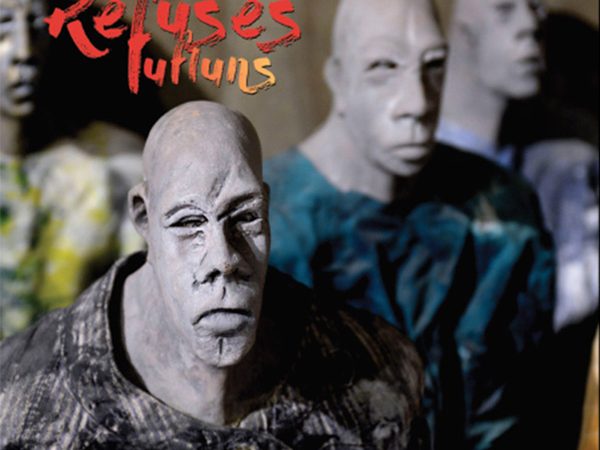
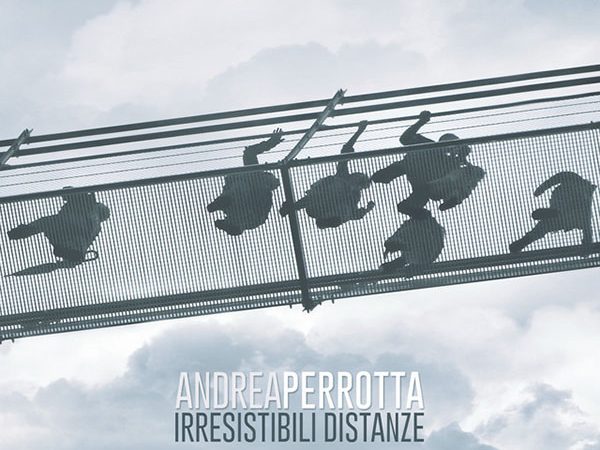


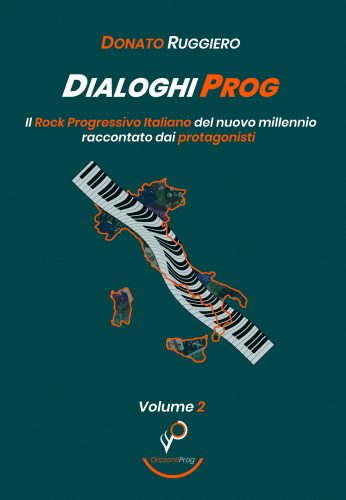
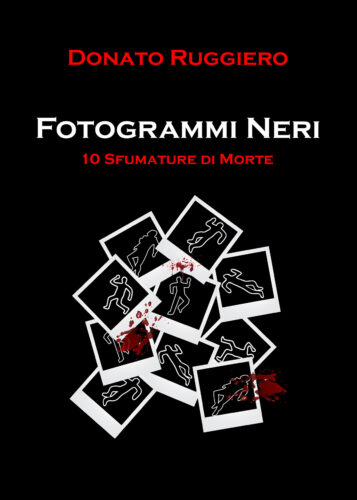
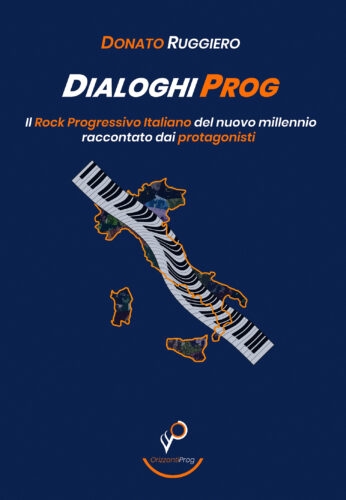
Lascia un commento